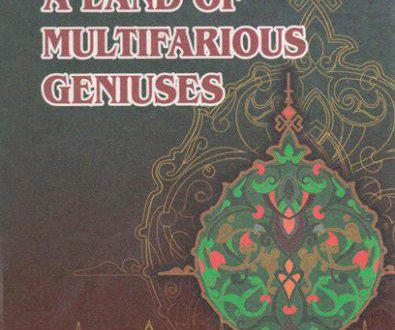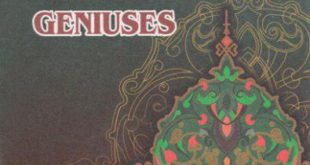About the book “Musnad”
“Al-Musnad al-kabir” (Al-Musnad) written by Imam ash-Shashi is devoted to the science of Hadiths. Up to the recent years the only handwritten copy of this book was preserved in “Az-Zahiriya” library in Damascus, Syria under the code number 277 and then lately it was given to the library of rare manuscripts “Maktabat al-Asad” in the same city. Consisting of 192 pages, this copy was written by a scribe al-Hafiz Ziyavuddin al-Muqaddasi in the naskh script. 1 his precious work was investigated and studied in detail by Mahfuz ar-Rahman Zaynullah, who was a scholar and an estimated expert in Hadiths, a member of the centre “Markaz ad-da’vat va-I irshad” in Dubay, and published under his edition in a number of volumes in Medina. The fact that this precious book written a diousand years ago by our countryman Imam ash-Shashi was published by Mahfuz ar-Rahman Zaynullah is of great importance hi die process of studying the author’s scientific heritage.
The fact that “Al-Musnad” belongs to the pen of Imam Abu i id Haysam ibn Kulayb Shashi is proved by Doctor Mahfuz ar-K.iliman Zaynullah in the following reasons:
- Every available Hadith mentioned in this book begins with the ii.imcs of Imam Shashi’s teachers and masters such as Abbas ibn Muhammad ad-Duri, Abu Isa at-Termizi, Abu Hatam ar-Razi, Isa I Ilm Ahmad al-Balkhi, Abdullah ibn Muhammad ibn Shakir, etc.
- Characteristic features and peculiarities of the Hadiths cited in this book contain the names of Imam Abu Said Haysam ibn Kulayb Shashi’s students and followers such as Abulqasim Ali ibn Ahmad al-Huza’i, Abulqasim Ahmad ibn Abu Mansur al-Khalili, etc.
As has been stated by Doctor Mahfuz ar-Rahman Zaynullah, originally this book consisted of 15 volumes but the book we are speaking about begins from the 7th volume. The last pages of the 5th and 6th volumes have been found. The Hadiths involved in these pages belong to Ali (God be with him). The other pages found concerning these volumes came to such a condition that it is impossible to read and investigate them.
In the Islamic world there are many books written on the
science of Hadiths such as “Sahih” and “Musnad” where the
authors used different styles. In the process of writing “Al-Musnad”
Imam Abu Sa’id Haysam ibn Kulayb Shashi also used a special
method of writing peculiar to him only. The author placed the
Hadiths according to the names of sahabas, but the truthfulness or
untruthfulness of the Hadiths was not taken into consideration. The
book contains firstly the Hadiths taken from ten sahabas for who
a place in paradise was predicted. The Hadiths of each sahaba were
classified separately. t
As is known from its title this book contains characteristic features (musnads) of each Hadith taken from well-known sahabas and these cited Hadiths are classified under the principles of the authorities of the sahabas. The Hadiths are described in accord wit1 the following principles:
– At first, the author presents in an alphabetical order th Hadiths cited from four followers (chahariyars) of Prophet Muham mad (saas), then the Hadiths cited from ten sahabas for whom a place in the paradise was predicted, followed by the Hadiths of the other sahabas.
— The author sometimes mentions a short biography of a sahaba but sometimes the description was limited only with the name and the title of a sahaba.
- The characteristic features of the sahabas are placed in accord with the citation the author used.
- While describing the essence of the Hadiths, except some cases, the author does not deal with the text in which this or that Hadith was used.
- The author does not classify the Hadiths into reliable or good. In most cases, they are mixed but all the Hadiths are described clearly.
- In cases of similarity of the row of roviys of the Hadiths under discussion, the author uses the phrases like “mislahu” meaning “like that” or “nahvahu” meaning “belonging to it”.
The most important fact is that Imam Abu Sa’id Haysam ibn Kulayb Shashi described and characterized the Hadiths correctly and clearly in an understandable language. The Messenger of Allah (saas) said: “It is immorality to curse a Muslim and it is apostasy to kill him”. It is clearly seen from the above-mentioned Hadith that it is not good to curse the man, laugh at him and humiliate him. Lots of such educational Hadiths can be cited from the book. For instance, the Hadith No 602 sounds as follows: “… faced Abdurrahman Safa and said: “Hey, tongue! Say good things and you will be awarded. Before regretting try to keep silence, you will be safe and sound”. Shaqiq said: “Is it the thing you have heard?” He answered: “I’ve heard from the Prophet Muhammad (saas) that man may be charged and punished because of his careless tongue”.
Generally speaking, Imam Abu Sa’id Haysam ibn Kulayb ash-Shashi’s “Al-Musnad” contains Hadiths which call people to be Iaithful, merciful and careful, just and kind to each other and prevent people from doing bad things as murder, bad deeds, intrigues and humiliation.
 Imom Buxoriy xalqaro ilmiy-tadqiqot markazi bukhari.uz
Imom Buxoriy xalqaro ilmiy-tadqiqot markazi bukhari.uz










